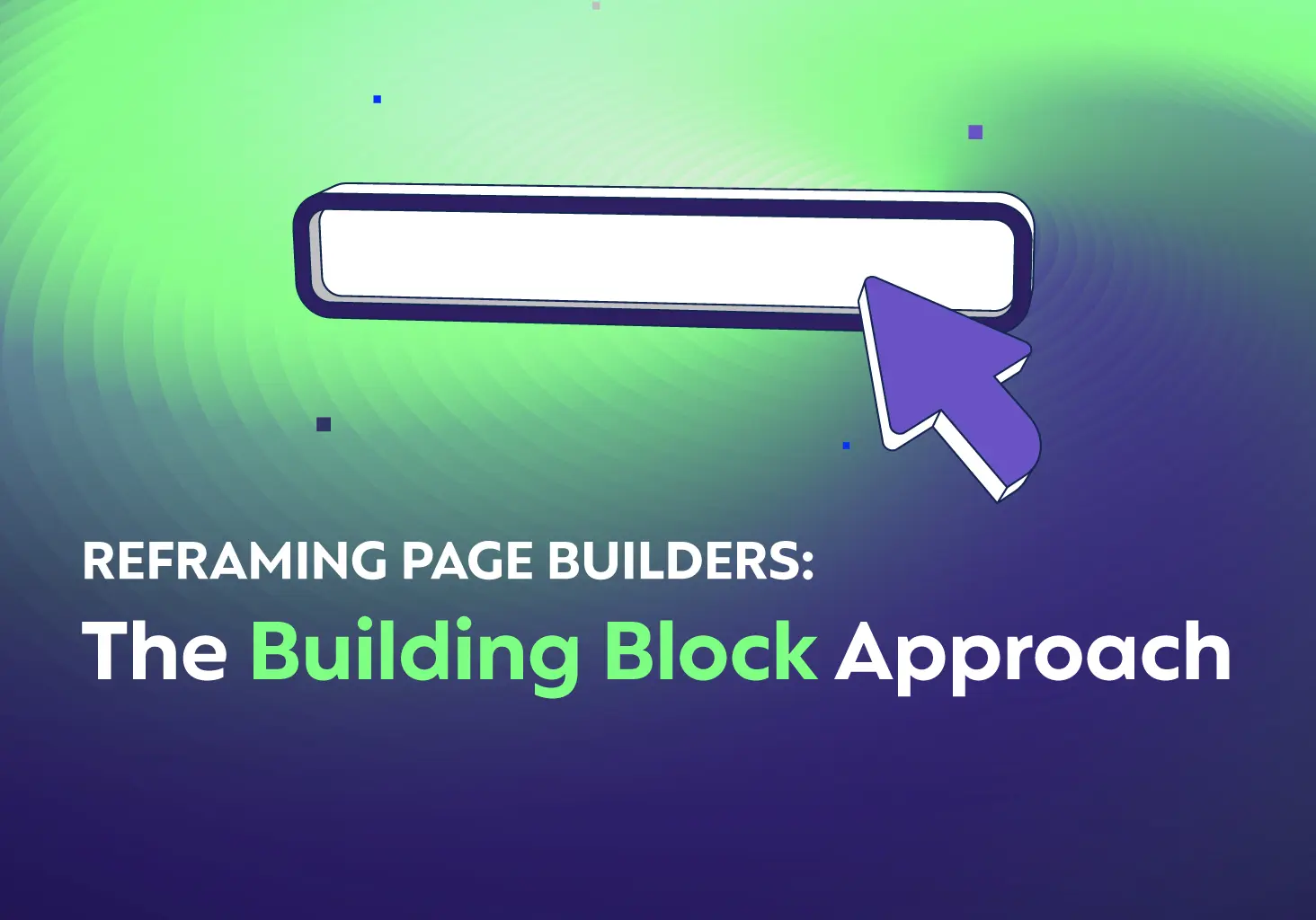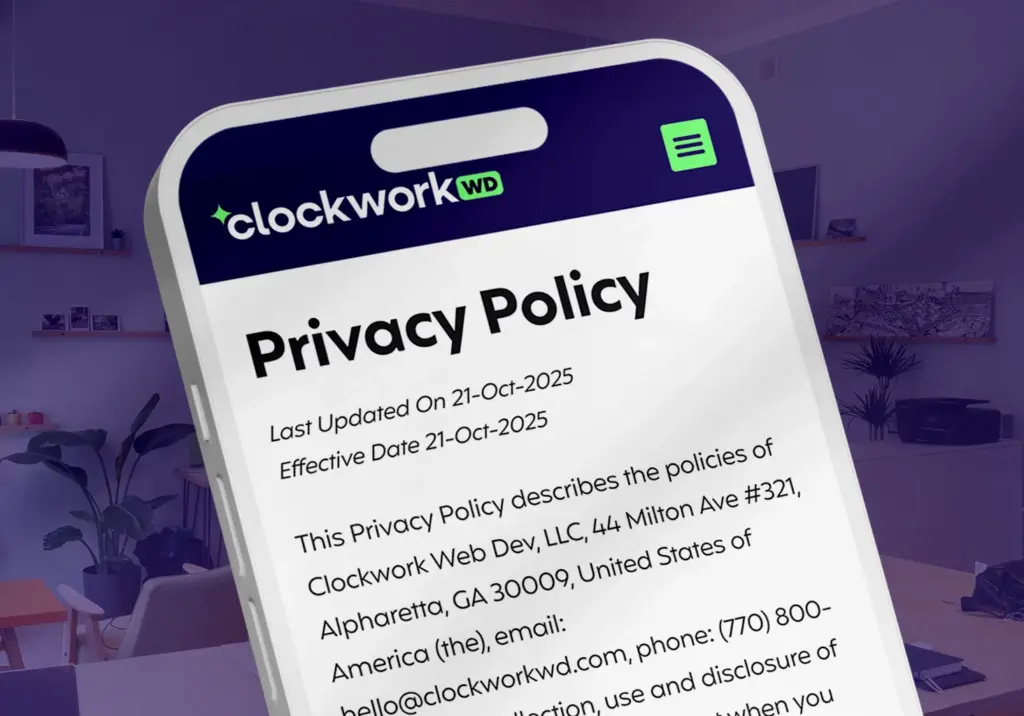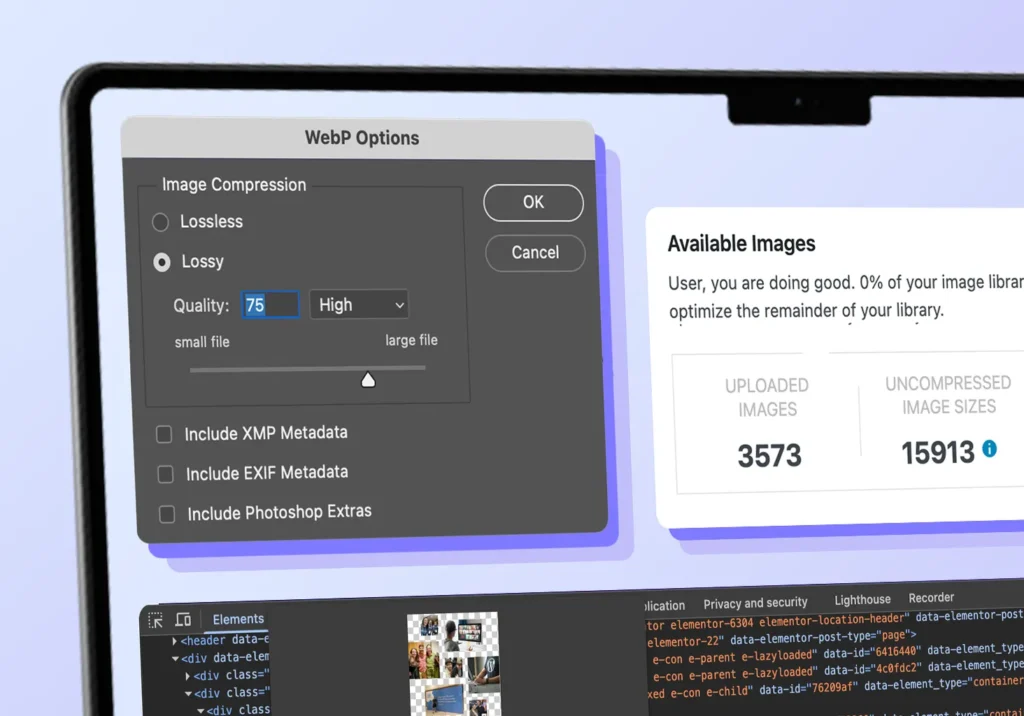We’ve talked all about common design mistakes, homepage first impressions, and web design tips and tricks but what about when it comes to actually building pages across a whole site?
I’ve been designing websites with Beaver Builder and Elementor almost exclusively going on 10 years now. These WordPress pagebuilders help keep designs consistent with simple styling options but can also shorten the building process itself. Call-to-action sections, icon lists, styled buttons – these elements all turn into building blocks you can reuse across multiple pages.
Considering that consistent styling can increase brand recognition by 80%, here’s what I’ve found actually works for clients here at Clockwork: well-branded building blocks that keep your site looking professional while shortening your timeline to a final polished product.
The Prep Work for Building Blocks
Most clients don’t see the behind-the-scenes planning during the web design phase, and honestly don’t need to – that’s why we’re here. During this time, I’m solving the puzzle of how everything looks and connects. When initial designs are prepped, our team sits down with you to go through content and a few light layout decisions. Not long after that you get a homepage where you can comment on the colors, edit content, and move things around.
But what exactly happens between these steps?
As a designer, I’m working with our content team to build a strong first impression on a homepage that we can use across the entire site. Taking part in these content decisions helps me sort out how to lay out the pages and most importantly make connections between pages.
Crash Course: Reusable Block Method 101
That callout section guiding users to sign up or donate? We often use the same design styling across your main pages. The content and perhaps the color get updated when it makes sense. Your homepage might say “Get Started Today” while your services page says “Ready to Work Together?” The overall look won’t change, but the messaging can help personalize pages and keep readers engaged.
What about the sections that display three content boxes with headings and descriptions? Or one content box with headings and descriptions? Looking at GaDOE’s Culinary Resources versus Culinary Demonstrations pages, you can see we used the same structural building block with some built-in flexibility. Some items link out, others download directly. I’m planning how that same adaptable structure will work across your key pages.
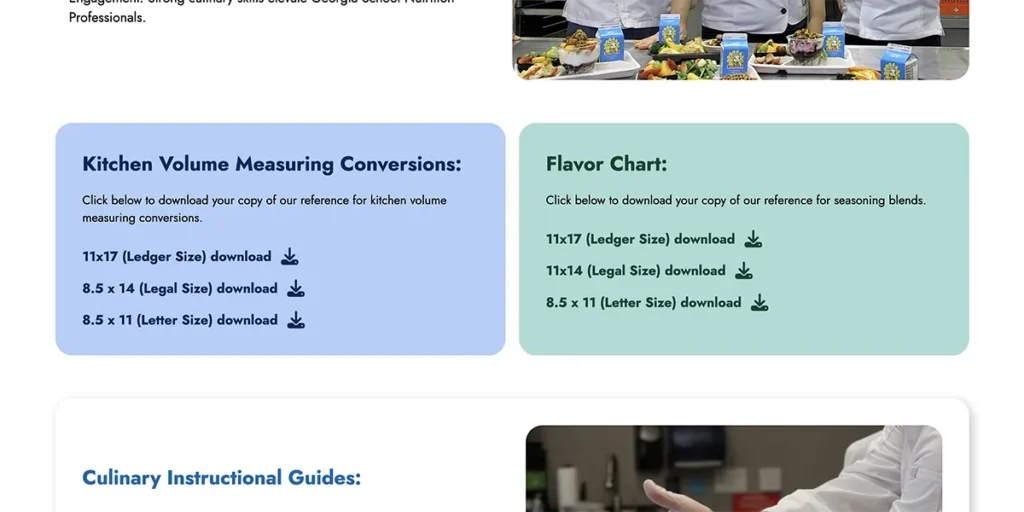
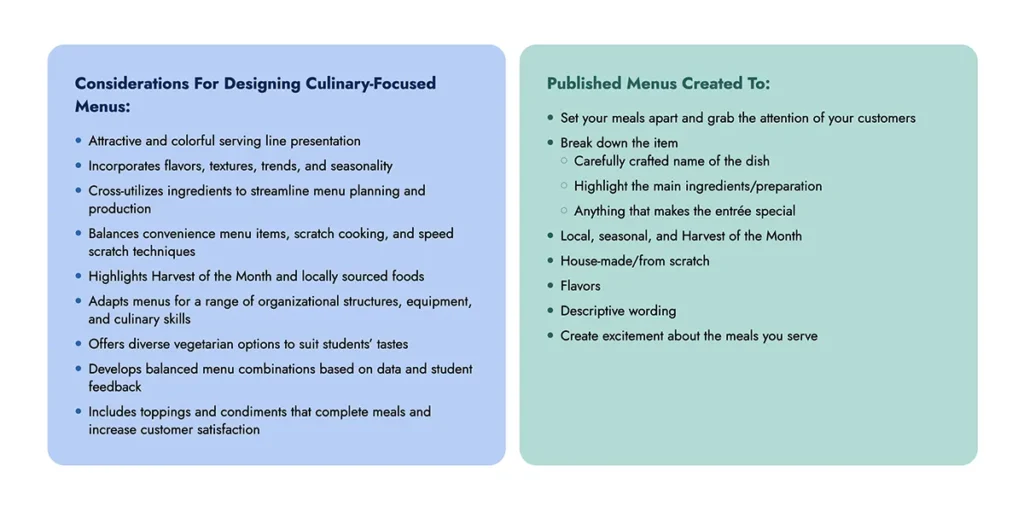
These recyclable elements – entire rows, unique layouts, even individual buttons – are the core building blocks for your website. They create consistency that makes your site feel like one cohesive brand while speeding up the actual build process, and shortening your time to launch.
You don’t need building blocks to stay consistent, but they make it a lot easier to get right. It’s not cookie-cutter copy and pasting, but strategic consistency that feels intentional.
The Problem with Inconsistent Design – Your homepage might have a sleek modern button, your About page uses a completely different font, and your Services page looks like it belongs to another company entirely. That’s when visitors get confused and start questioning whether your business is actually professional enough to handle their needs.
Paying Off in Two Ways
Using the same design blocks throughout your website won’t only save you time during development, they’ll also save you conversions over the long run.
While building blocks can boost brand recognition by 80%, the same study found 88% of people won’t return to a website after a bad experience. Getting that consistency right the first time actually protects your long-term customer relationships and maximizes return on investment by eliminating the costly redesigns that come from piecemeal, inconsistent development.
Now that we’ve looked at the content and have a general idea of which sections can be designed similarly, let’s jump ahead. The homepage is built and we know we’ll need reusable elements, like call to action blocks and three-box styling, to carry the designs into the subpages.
How Page Builders Simplify Building Blocks
Beaver Builder and Elementor both have user-friendly ways to save or copy elements between pages on your WordPress website. This is where the building block mentality really pays off.
That call to action section we’ve been holding up as an example can easily turn into a Beaver Builder Saved Row – or in Elementor, a Template.
Common Building Block Examples
Beyond a main CTA (call-to-action) block or things like primary button styling, here’s a more complete list of potential building blocks:
- Main CTA (call to action)
- Primary button
- Secondary button
- Image left, Title/Description right
- Three-column feature boxes
- Team member cards
- Testimonial sections
- Hero banners
- Service listing rows
- Contact information blocks
- Newsletter signup forms
- Social media icon sets
- Page headers with breadcrumbs
- Pricing tables
- FAQ accordion sections
Time-saving Tip: Make sure to name your saved items something intuitive. Once your library starts to build up it can become confusing if you’re using sloppy titles.
Beaver Builder: How to Save Rows, Columns, and Modules
Once you have the design finalized and have checked how it looks on all screen sizes:
- Open up the module or row settings
- At the bottom of the box, click Save As
- Name it appropriately so you’ll have an easy time remembering what it is down the road
- On the page you’d like to place the row or module, click the plus button in the upper righthand corner.
- The palette will open automatically when opening with the page builder
- Click the Saved tab
- Scroll to find the saved row or module you’d like to add to the page or use the search to type it in
- Drag and drop this into the page and you’re good to make any updates to the content, colors, links etc. within the saved item
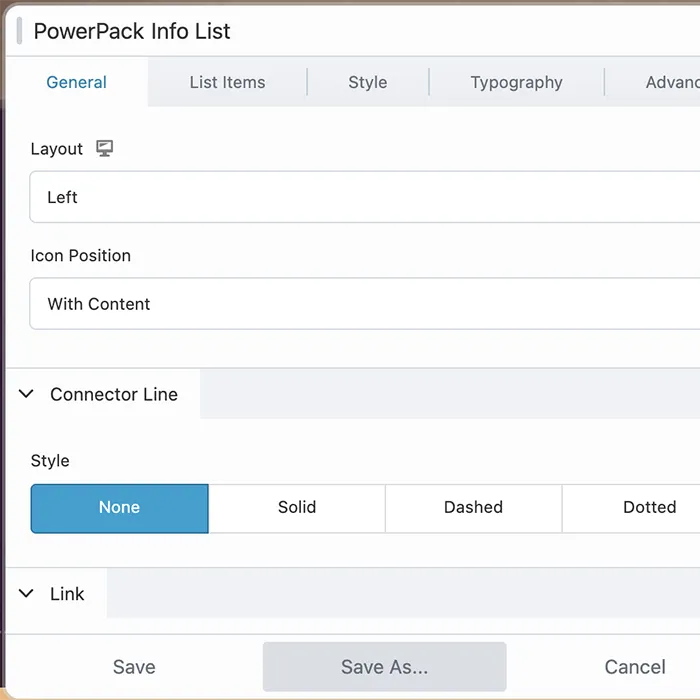
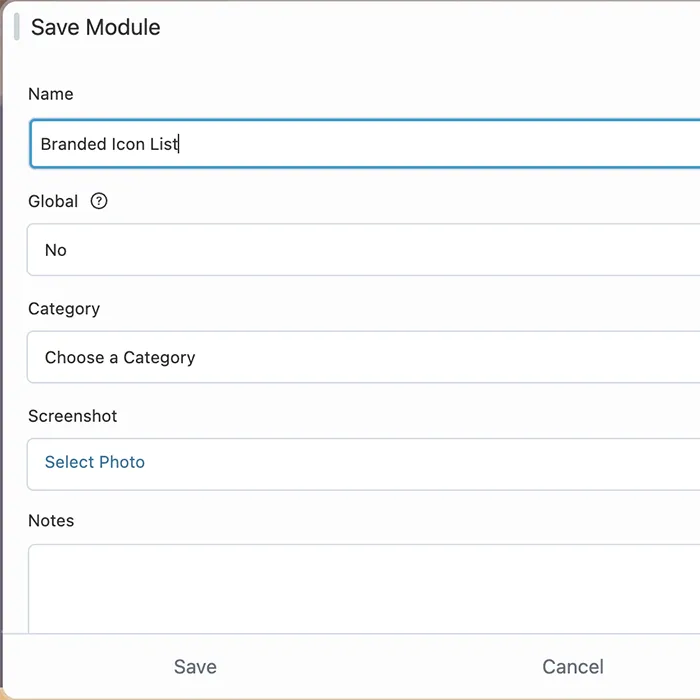
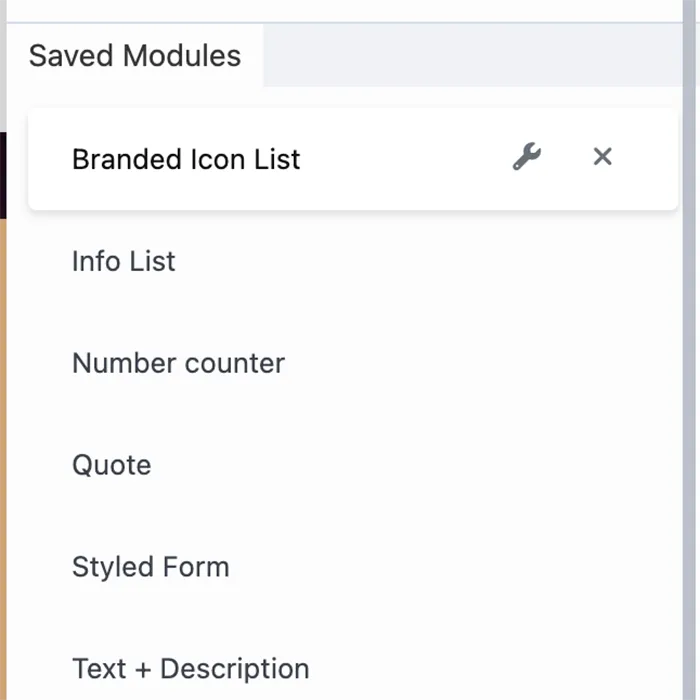
Elementor: Two Ways to Reuse Your Building Blocks
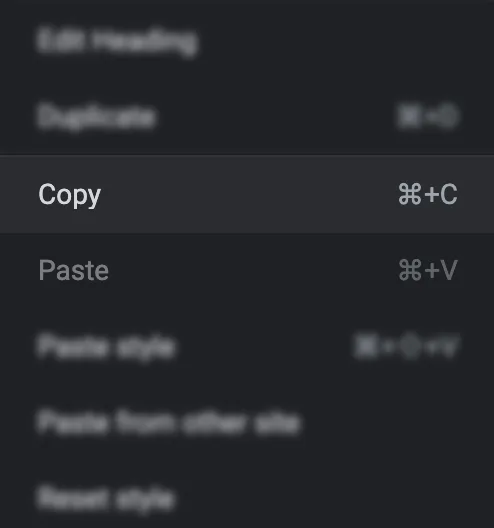
Method 1: Copy and Paste Between Pages
Once you have the design finalized and have checked how it looks on all screen sizes:
- Right click on the container or widget and select Copy from the drop down menu
- Open the desired page you’d like to place your item
- Right click in the new container area and select Paste
Method 2: Save as Template
Once you have the design finalized and have checked how it looks on all screen sizes:
- Right click on the container or widget and select Save As Template from the drop down menu
- Make sure to name it something intuitive so you’ll know what each saved template is down the road
- Open the design page you’d like to place your item on and click the folder icon in the new container area
- Click the Templates tab at the top of the pop up window
- Select your desired saved template and click the Insert button
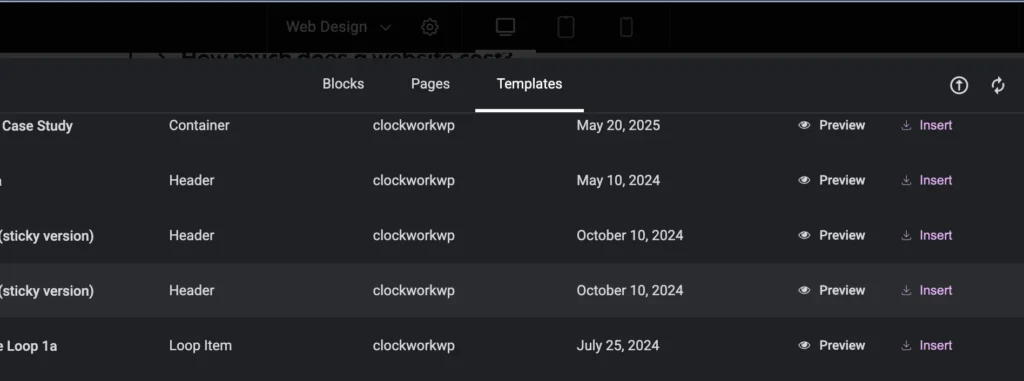
Real-World Examples: Building Blocks in Action
You can see building blocks at work across different projects we’ve built using Beaver Builder and Elementor.
For GaDOE’s Virtual Learning Network, built with Beaver Builder, notice how the subpage layout structure stays consistent. Whether you’re on the Careers page or the Qualifications for GaVS Instructional Positions, the hero section, icons, informational palette and overall page structure is set. We made these building blocks structured yet flexible enough that their team can add sections to new pages, swap out photos, and update content without breaking the page styling.


We built Teach in the Peach using Elementor. You can see the building block approach at work for content layouts across multiple people-focused pages.
One example is the design treatment on their Teach page with the structured content boxes and styling that gets reused on their Live page with the same visual structure. Same fonts, same spacing, same design treatment – just different content and messaging.
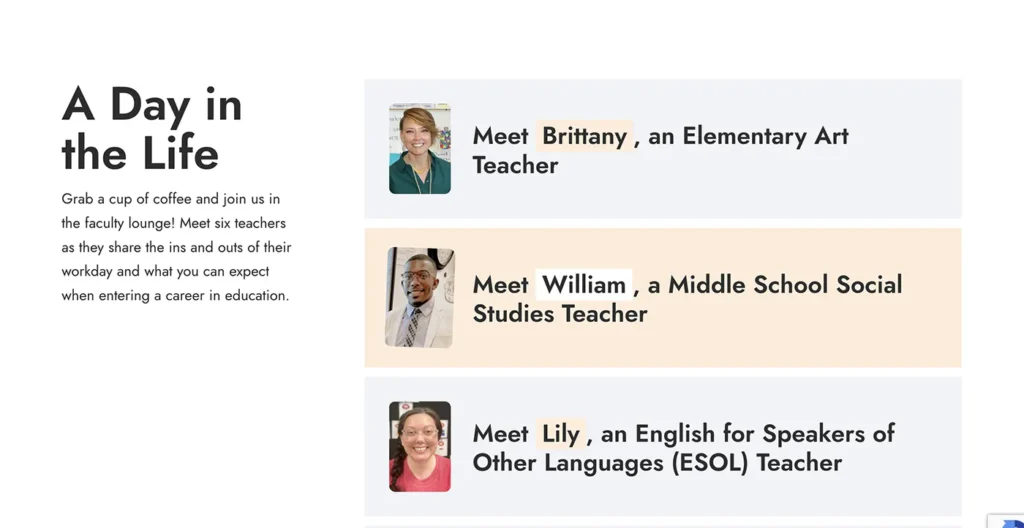
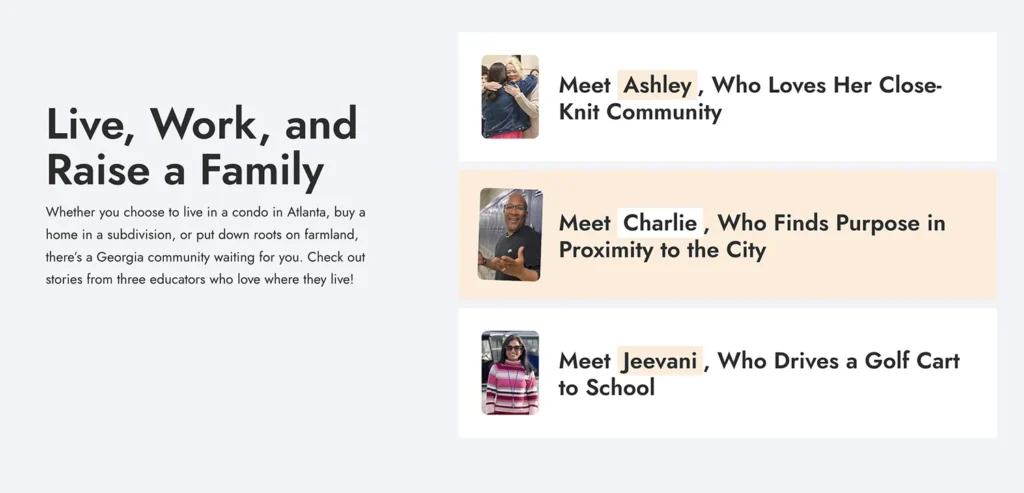
These aren’t individual designs we create for each page. They’re building blocks we design once, get your feedback on, and then reuse strategically, so you can update content and maintain consistency without needing ongoing design or developer work.
While we love pushing boundaries with custom WordPress development and advanced approaches like headless websites, using a set of hand-crafted building blocks allow us to bring a similar level of professionalism and polish to projects with tighter budgets.
Better Together: Building Blocks and Custom Post Types
If you’re looking for more than standard building blocks but aren’t ready for full custom development, we can add custom post types to the equation.
For Delta Zeta, we created custom post types for board members, “35 Under 35” honorees, and podcast episodes. Then we designed a Page Template (a reusable whole page ‘building block’ that dynamically populates information from WordPress Pages, Posts and Custom Post Types) for how that content should look. Now when they add a new board member, they just fill in the fields (name, title, photo, bio) and the Page Template automatically applies the consistent styling you see across their site. Same consistent design with zero code required.
It’s like having a template (the building block) that automatically pulls from an organized filing system (the custom post type). The content team focuses on adding the information, and the building blocks make sure it always looks exactly right.
This no-code approach means their team can manage hundreds of profiles and updates without ever worrying about breaking the design or creating inconsistent layouts.
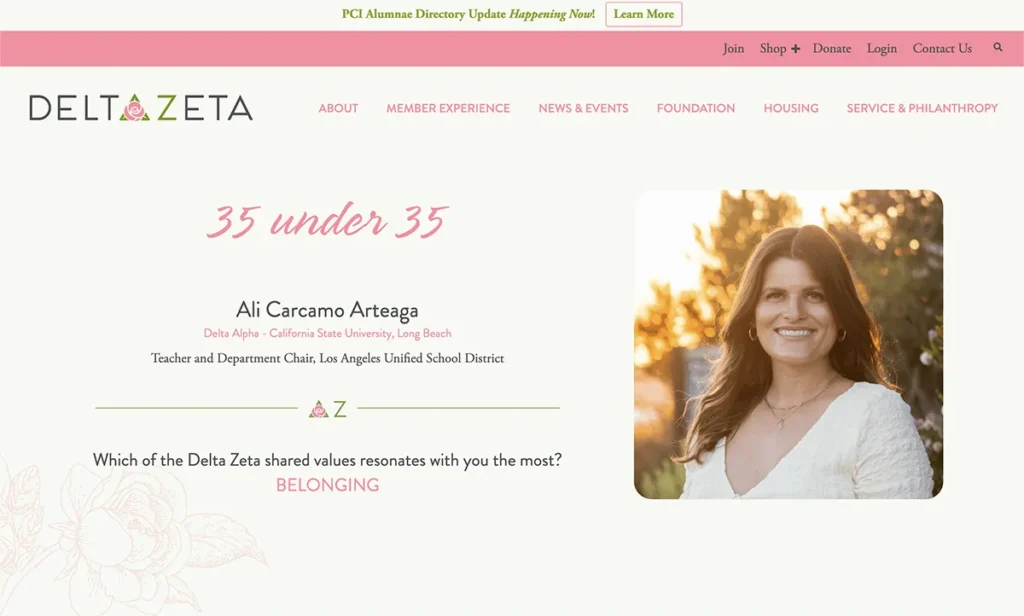
Think Building Blocks for Better Websites
This building block approach transforms how you think about website development – from creating individual pages to building a cohesive system.
When you view each section or element as a building block, you streamline the process of setting up a rock-solid design foundation that carries consistent designs across your entire site.
If you want to learn more about how to create professional-looking websites that actually work for your business, check out these resources:
- Web Design on a Budget That Saves Money
- Have a WordPress Expert Look at Your Site
- Website Rebuild Prep Checklist: 7 Key Steps
And if you’d rather have us handle this building block strategy for you, just reach out below.

